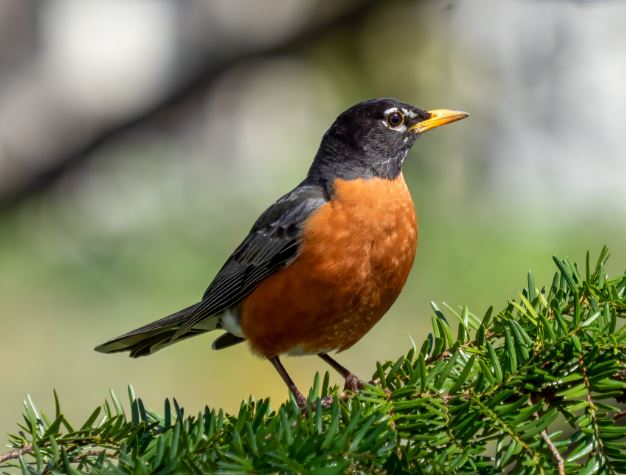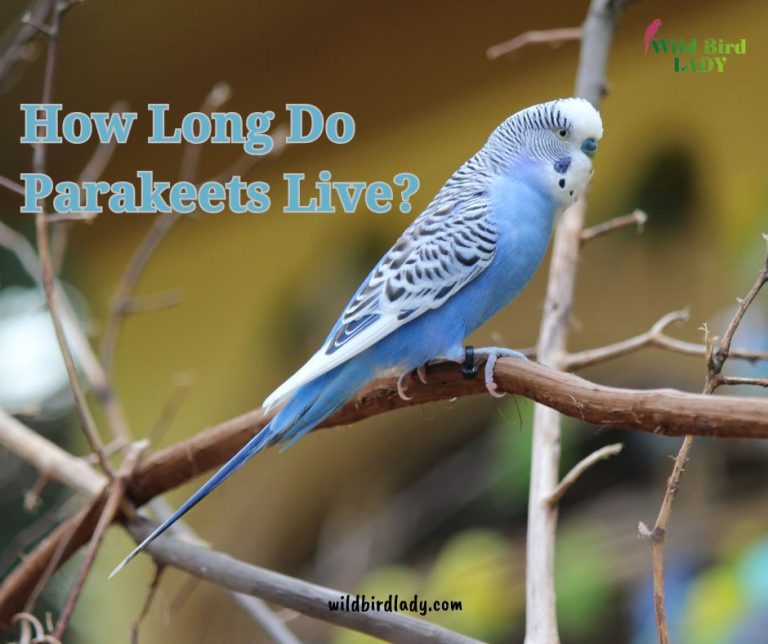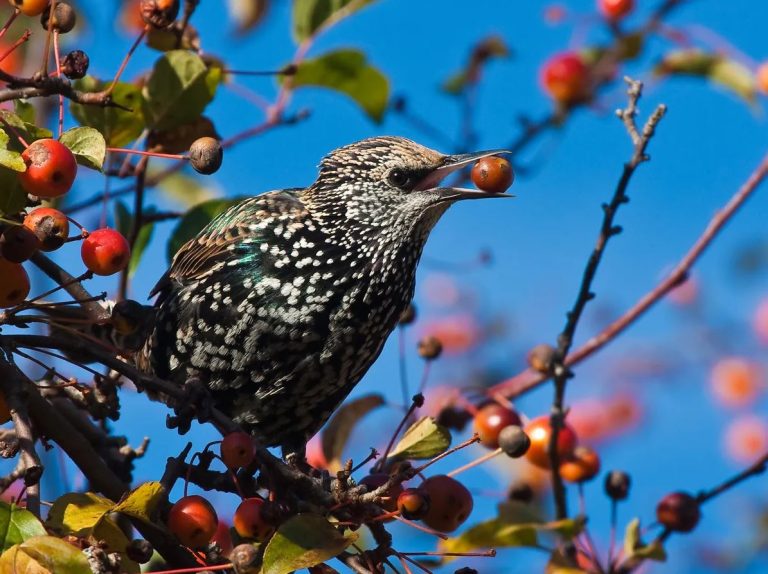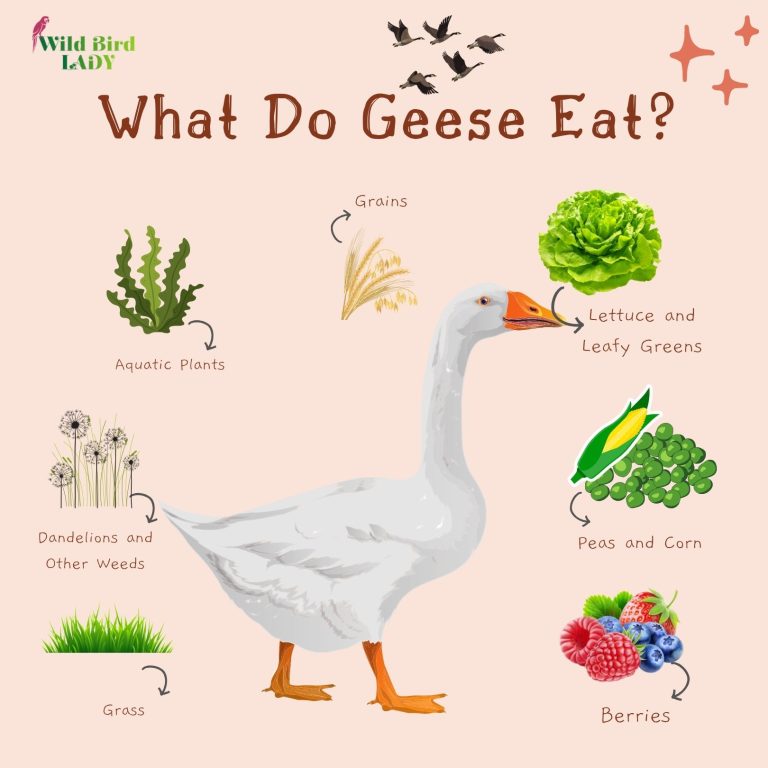American Robin: Everything You Need to Know About This Iconic Backyard Bird
Introduction: Meet the American Robin
If you’ve ever walked through a suburban neighborhood or strolled through a park in North America, chances are you’ve seen or heard the cheerful American Robin. With its warm orange-red breast and melodic song, the American Robin (Turdus migratorius) is one of the most familiar and beloved birds in the United States. But there’s more to this backyard favorite than meets the eye.
In this in-depth guide, we’ll explore everything from what American Robins eat and where they live, to their nesting behavior, migration patterns, and even their symbolism in folklore. Whether you’re a beginner birdwatcher or a seasoned nature enthusiast, this guide will deepen your appreciation for these iconic birds.
1. Quick Facts About the American Robin
| Feature | Details |
|---|---|
| Scientific Name | Turdus migratorius |
| Family | Turdidae (Thrush family) |
| Size | 9–11 inches long |
| Wingspan | 12–16 inches |
| Weight | 2.3–3 ounces |
| Lifespan | Typically 2 years (can live longer) |
| Habitat | Forest edges, backyards, parks, grasslands |
| Diet | Earthworms, insects, fruits, berries |
| Range | North America—from Mexico to Alaska |
| Song | Cheerful, whistling phrases: “Cheerily, cheer-up, cheer-up” |
2. How to Identify an American Robin
The American Robin is easy to recognize:
- Breast: Bright reddish-orange, especially vibrant in males.
- Back and Head: Grayish-brown back; males have a darker, blackish head.
- Eyes: White broken eye-ring.
- Beak: Yellow with a slight black tip.
- Tail: Long, blackish with white undertail feathers visible in flight.
Males vs. Females: Females are generally duller in color than males, especially in the head and breast.
3. American Robin Habitat and Range
Where Do American Robins Live?
These birds are found throughout most of North America. They are highly adaptable and can thrive in a variety of habitats, including:
- Woodlands
- Farmlands
- Suburban neighborhoods
- Parks
- Urban gardens
During breeding season, they prefer open areas with nearby trees and shrubs. In winter, robins often form flocks and seek out fruiting trees in wooded areas.
4. What Do American Robins Eat?
Keyword: What Do American Robins Eat
American Robins have a varied diet depending on the season:
Spring and Summer:
- Earthworms (their favorite!)
- Beetles
- Caterpillars
- Grasshoppers
- Snails
- Other soft-bodied insects
Fall and Winter:
- Berries (holly, dogwood, juniper, chokecherry)
- Fruits (apples, crabapples, hawthorn)
They often forage on lawns, hopping and listening for underground worms—a fascinating behavior you can observe up close.
🪱 Fun Fact: Robins rely heavily on their eyesight—not sound—to spot worms!
5. Nesting Habits and Reproduction
American Robins are early nesters. Their nesting season can start as early as March in southern regions and April–May in northern zones.
Nesting Facts:
- Nesting Material: Grass, twigs, feathers, mud
- Nest Location: Trees, shrubs, house ledges, gutters
- Clutch Size: 3–5 blue eggs
- Incubation: 12–14 days (female only)
- Fledging: Young leave the nest about 14–16 days after hatching
They may raise 2–3 broods per year. You might even spot juvenile robins following their parents while begging for food.
🪺 Pro Tip: Avoid pruning trees or shrubs in spring to protect active nests.
6. Migration: Where Do American Robins Go in Winter?
Though we often think of robins as harbingers of spring, many robins stay in colder areas year-round.
Migration Overview:
- Northern robins migrate south (southern U.S., Mexico).
- Some robins stay in their breeding range but change habitats—moving from open lawns to wooded areas.
- They often travel in large flocks in fall and winter.
Robins are partial migrants: migration depends on food availability, not just temperature.
7. Vocalizations and Songs
The American Robin is one of the earliest birds to sing at dawn.
Common Calls:
- Song: Series of whistled phrases “Cheerily, cheer-up, cheer-up, cheerily, cheer-up.”
- Alarm call: Sharp “tut tut tut”
- Whinny: A soft descending call used when disturbed.
Listen to their song via Macaulay Library Audio – American Robin.
8. How to Attract American Robins to Your Yard
Want robins visiting daily? Here’s how to turn your yard into a robin paradise:
Food:
- Offer chopped apples, raisins, mealworms on a platform feeder.
- Plant fruiting trees and shrubs: serviceberry, crabapple, dogwood.
Water:
- Add a birdbath with clean water.
- Heated birdbath in winter keeps robins coming year-round.
Shelter:
- Provide trees or shrubs for nesting.
- Avoid using pesticides—robins eat ground insects.
9. American Robins in Culture and Symbolism
Robins often symbolize renewal, rebirth, and hope—especially in spring.
- Literature: Featured in “The Secret Garden” as a helpful character.
- Folklore: Some Native American tribes see the robin as a sign of good weather.
- Spiritual Meaning: Many believe a robin sighting is a visit from a departed loved one.
10. American Robin vs European Robin
Despite sharing a name, they’re different birds!
| Feature | American Robin | European Robin |
|---|---|---|
| Scientific Name | Turdus migratorius | Erithacus rubecula |
| Range | North America | Europe, parts of Asia |
| Size | Larger (9–11 in) | Smaller (5 in) |
| Breast Color | Orange-red | Red-orange |
| Family | Thrush | Old World Flycatcher |
11. Are American Robins Protected by Law?
Yes. The American Robin is protected under the Migratory Bird Treaty Act in the U.S. This means it’s illegal to harm robins, disturb their nests, or keep them as pets.
12. Predators and Threats
Despite their adaptability, robins face several dangers:
Common Threats:
- Domestic cats
- Snakes
- Hawks
- Habitat destruction
- Pesticides and chemicals
- Window collisions
Help robins stay safe by keeping cats indoors and using bird-safe window decals.
13. American Robin Lifespan and Survival
Most robins only live 1–2 years due to high predation, but if they survive their first year, they can live much longer.
Oldest known American Robin in the wild: over 13 years!
14. Fun and Fascinating Facts
- Robins can have up to 3 broods in one season.
- They can detect worms underground by sight, not sound.
- Robins sleep in roosting flocks during winter.
- The robin is the state bird of Connecticut, Michigan, and Wisconsin.
15. How You Can Help the American Robin
- Plant native trees and shrubs.
- Leave leaf litter for insects.
- Avoid chemical lawn treatments.
- Provide fresh water year-round.
- Report bird sightings to platforms like eBird.
Conclusion: The American Robin—A Familiar Friend Worth Knowing
Whether you’re sipping coffee on your porch or hiking through a forest, the cheerful song of the American Robin is a comforting reminder of the natural world around us. Their resilience, beauty, and gentle demeanor make them one of the most cherished birds in North America.
So the next time you spot that flash of orange on your lawn, take a moment to appreciate this humble bird—and maybe offer a few berries in thanks.
FAQs About American Robins
Q: Do American Robins migrate?
A: Many do, especially those in northern climates. But some stay year-round where food is available.
Q: What does it mean when you see an American Robin in winter?
A: It likely found a reliable fruit source nearby. They’re more visible in spring but may still be around all year.
Q: Do American Robins use birdhouses?
A: No. They prefer open-cup nests in trees or on ledges.
Q: Can I feed American Robins mealworms?
A: Yes! They love mealworms, especially during nesting season.







